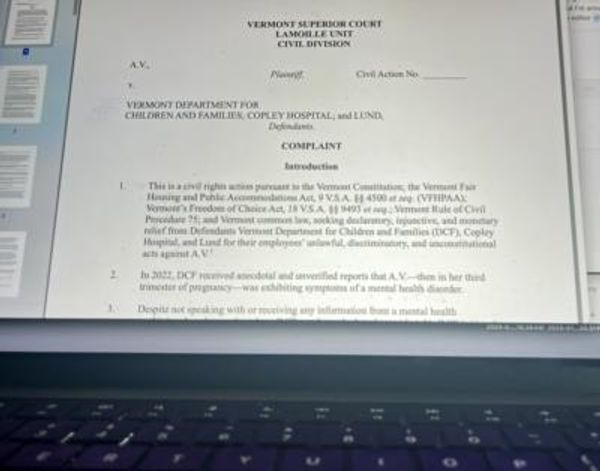
As meat consumption remains the biggest contributor to food-related greenhouse gas emissions, developing more eco-responsible habits requires changes to our diets. For livestock farmers, this translates into a need to find new ways of production.
Following Neige (Snow), Idéale (Perfect) and Imminence, the new ambassador of the International Agriculture Show, which opened February 25 in Paris, isOvalie, a 5-year-old cow of the Salers breed. As usual, the star gets to have her photo printed on posters for this annual event and her official public presentation is also set to be one of the high points of the show. This tradition highlights the importance of animal husbandry in French agriculture. But as climate activists often decry the environmental impact of meat production, the show also serves as an occasion to rethink our methods of production as well as the steaks on our plates.
On a global scale, meat consumption continues to rise: It has multiplied by almost five over the past 60 years, growing from 71 million tonnes in 1961 to 339 million tonnes in 2021, according to statistics from the UN Food and Agriculture Organization (FAO). This production has massive consequences for climate change: The livestock sector is responsible for 14.5 percent of all greenhouse gas emissions derived from human activities and half of the emissions of the agricultural sector worldwide.
The main culprit of greenhouse gas emissions on our plates
“In France, we eat an average of 100 to 110 grams per day per person, which is the equivalent of 85 kilograms per year. Twice the global average”, noted agricultural economist Carine Barbier, researcher for the French National Centre for Scientific Research (CNRS) and The International Research Centre on Environment and Development (CIRED). A mere quarter of the population describes itself as flexitarian, eating meat only occasionally, while 2.2 percent describes itself as vegetarian.
“It’s the principal cause of dietary-related greenhouse gas emissions” Barbier added. “Ultimately, the whole food industry already represents 25 percent of French emissions, this includes the entire process, from the production to our plates as well as imports. Animal farming alone represents 9 percent of total emissions.”
Due to emissions of three types of greenhouse gas – carbon dioxide (CO2), nitrous oxide and methane – into the atmosphere, animal husbandry is costing the planet dearly. “CO2 emissions come from the use of fossil fuel for transportation, namely imports, (and) the use of machinery in agriculture as well as in the food processing industry and large retail outlets,” the expert explained. Nitrous oxide (N2O), on the other hand, “comes from the use of mineral nitrogen fertilisers in fields”, and methane is produced by the digestive system of cattle. Although not as well known as carbon dioxide, the latter two gases are not less harmful: N2O reflects 300 times as much heat as CO2 while methane reflects 28 times as much.
“Therefore we have to differentiate between ruminants, swine and poultry”, Barbier said. “Due to their particular digestive system, ruminants have a larger impact on the climate.” According to the French Agency for Ecological Transition (ADEME), a kilogram of beef represents around 14 kilograms of CO2 equivalent (CO2e), which includes CO2, nitrous oxide and methane, 10 times that of poultry.
On top of its climate impact, animal farming is also responsible for detrimental effects on the environment. According to a 2015 report by the Physics Institution, livestock production accounts for 78 percent of terrestrial biodiversity loss, 80 percent of soil acidification and atmospheric pollution as well as 73 percent of water pollution.
‘It’s a wake-up call for the industry’
Facing this situation, farmers envision several solutions to reduce their environmental impact. In a press release published at the opening of the International Agriculture Show, the national inter-professional association of cattle and meat (Interbev) says it aims to reduce the beef sector’s carbon footprint by 15 percent in 2025, compared to 2015.
“It’s a wake-up call for the entire industry to the urgency of climate change,” the president of Interbev’s beef sector Emmanuel Bernard said. “As animal farmers, we are the first to suffer from global warming and its consequences.”
Barbier suggested that farmers move “towards more extensive breeding with a higher consumption of grass, and thus limiting the production of cereal used in fodder. This in turn reduces the use of fertilisers and pesticides.”
“We also have to cut down on imports of animal feed. I’m thinking of, for example, soybean meal imported from Brazil that leans heavily on transport. Currently, transportation represents more than one-fifth of the food industry’s carbon footprint,” she continued. “Why not return to crop-livestock systems in which farmers grow most of what the animals need by themselves?”
Bernard tires to heed this advice as a farmer. Thirty years ago, he took over the family ranch located in Nièvre. Today, he is accountable for 110 charolais cows à vêler (to calve), meaning they are destined to give birth to calves to be fattened before being sent to slaughterhouses. For a few years now, he has also started adding installations to make his farm more eco-friendly.
“I don’t import any soy products. My cows and calves mostly feed on grass, fodder and cereal that I grow myself, on my land. Among the 220 hectares of land, 125 hectares are meadows while 25 hectares are used for growing cereal”, he said.
Three years ago, Bernard went even further and submitted his practices for evaluation to CAP2ER, which provides a diagnosis of gas emissions. It's a five-year process that should allow him to explore new ways to reduce his carbon footprint. “I envision, for example, cultivating meslin, which is a mix of cereal and protein crop, instead of maize.”
Adjusting herd sizes
But to make further progress in transforming large-scale farming methods, “it’s absolutely necessary to start reducing herd sizes”, Barbier insisted. These practical changes would set into motion a virtuous cycle. “For example, by cutting back on meat in our diets and decreasing cereal fodder and oil and protein crops used in animal feed, we would increase the area of arable land that we can use to grow crops for human consumption,” she added.
France has already announced its aim to reduce herd sizes via the National Low-Carbon Strategy for agriculture published in June 2021, which targets a 13 percent reduction by 2030. The target is lower than what the scientific community recommends. Nevertheless, the trend is already growing among animal farms, as the total number of lactating and milk cows declined by 8 percent between 2000 and 2019 according to the Institut de l’élevage (IDELE). The same has been noted for sheep, which saw a decrease of 8.3 percent from 2011 to 2020 while the number of sows in the swine industry have dropped by 19 percent in 10 years.
“Initiating this transition towards more sustainable agricultural practices is nowadays indispensable in order to render the farming system more resilient against climate change all the while reinsuring our food sovereignty”, Barbier emphasised, pointing to the fact that the animal husbandry sector is already in a crisis. “But to do this, we need stronger support from the European Union. We have to ensure a steady stream of income during this transition period.”
“Currently we are producing a lot of diagnosis and observations on the problems surrounding animal farming, but we struggle to implant real methods of change”, the farmer Bernard added. “And the main reason behind this is tied to finances. If we had real political support, we would be ready to make the change.”
“Without all that, we risk becoming less competitive than other countries and this would drive imports”, he stressed. “It would neither be good for us, nor the climate.”
A revolution on our plates
Meanwhile, real changes in production cannot take place without consumers, according to Barbier, who authored a study published in October establishing multiple scenarios for a carbon neutral diet by 2050. “Above all else, we need to reduce our meat consumption. That’s what will prompt farmers to transition.”
In addition to purely ecological thinking, she also advanced several nutritional arguments. “In any case, we consume too much protein, around 80 percent more than what we need,” the expert continued, pointing to oft-illustrated cardiovascular risks linked to overconsumption of meat. In 2019, a commission formed by the medical journal The Lancet estimated that Europeans should cut their red meat consumption by 77 percent while doubling fruits, vegetables, nuts and legumes in order to respect the limits of Earth’s resources and to maintain their own health. “Reducing our consumption to reflect our real needs will considerably decrease the carbon footprint of our diets.”
“If we stick to the most moderate scenario, then we need to cut down two-thirds of our meat consumption and half that of mik products”, she explained. “By no means do we seek to remove meat completely from the entire population’s plates. It is a question of developing our diet and animal-farming practices to reach carbon neutrality.
Favour plant-based options
Numerous plant-based alternatives exist in order to help implement these changes to our dietary habits and progressively decrease meat portions on our plates. The first and the most obvious one is to consume more cereal and protein-rich legumes such as lentils and chickpeas.
In the last few years, supermarkets have started to push out more and more plant-based meat substitutes. Among them are “plant-based steaks”, “fake bacon bits”, and “plant-based meat strips” made from peas, tofu or soybeans that imitate the taste and texture of beef or chicken. “Nowadays, all of these options imitate meat quite well and can be a helpful way to change one’s habits”, said Tom Bry-Chevalier, an expert in alternative meats and a doctoral student at the University of Lorraine.
“This is all the better since we now know that these options have a lesser impact on climate than meat”, he said. According to a recent study, yhese plant-based substitutes emit 10 times less greenhouse gas than beef, and as much as 25 times less for tofu.
A report from Boston Consulting Group published in July estimates that the “investments in plant-based alternatives to meat” are “much more efficient in reducing greenhouse gas emissions than other green investments”. Each euro invested in these products has up to three times as much impact as it would have if placed in renovating buildings and 11 times as much as in the production of electric cars”.
“Another alternative could be the development of laboratory-grown meat, produced directly from animal cells”, Bry-Chevalier continued. Despite rapid growth with dozens of start-ups worldwide, the project remains for now at the laboratory stage.
“This option also has its limits. First of all, lab-grown meat is still tied to high emissions if the energy used to produce it is not carbon neutral”, Bry-Chevalier said. “But most importantly, we are still very far away from large-scale commercialisation while the climate crisis is an emergency. We can’t afford to wait for lab-grown meat to change our habits.”
According to Barbier, plant-based steaks and lab-grown meat – if they develop – must be seen as resources for transition. “We already have all the necessary ingredients for our daily protein needs thanks to vegetables,” she said. “Let us offer delicious vegetarian dishes in collective food halls, let people choose their meat portions there ... It could really make a difference.”
This article is a translation of the original in French.







